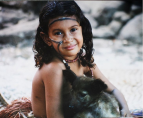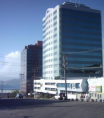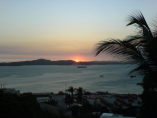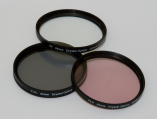Level of surfing
Advanced
Quality of surf
Very Good
Call code
675
Net code
pg
Area
462840
Coastline
0 km
Climate
Tropical Maritime
Hazards
Very Isolated, Extreme Heat, Difficult Access, Coup / Civil Unrest
Best Months
May - December
Population
5887000
Currency
Papua New guinea Kina (PGK)
Time Zone
AEST (UTC+10)
Special Requirements
Limited Surfing Supplies Available
introduction

Rei-artur: Location Papua New Guinea; 26 December 2006
Papua New Guinea, officially the Independent State of Papua New Guinea, is a country in Oceania, a part of the largest non-continental island in the Pacifics. It is in the middle of a long chain of islands which form part of a great arc of mountains stretching from the Asian mainland through Indonesia and into the South Pacific. It has more than 600 islands and is south of the equator, some 150 kilometres north of Australia.
Also it is a land of incredible beauty, with awesome mountains, plunging gorges and rushing rivers.
history

Nomadtales: Huli Wigman from the Southern Highlands of PNG; 29.6.05
The island was first settled more than 30,000 years ago and the first inhabitants were Papuan, Melanesian, and Negrito tribes, who altogether spoke more than 700 distinct languages. The first recorded sighting by Europeans (of the eastern part of the island) was in 1512 by two Portuguese explorers. In 1828, the Dutch formally took possession of the western half of the island (now the province of West Papua, Indonesia) and named it New Guinea because of similarities to Africa. Interaction between regions has been largely restricted due to the topography of the land and the diversity of the languages.
In 1885, Germany formally annexed the northern coast and Britain took similar action in the south. The country was divided between three nations, the Dutch, the Germans and the British towards the end of last century.
In the beginning of the 20 century Australia took over the British sector naming it "the territory of Papua" and then captured the German sector during WWI.
After being liberated by the Australians in 1945, it became a United Nations trusteeship, administered by Australia. The territories were combined and called the Territory of Papua and New Guinea (PNG).
Australia granted limited home rule in 1951. The country became fully independent in 1975 and is now a member of the British Commonwealth with strong ties to Australia.
TIMELINE
50,000 BC – First humans arrive in the New Guinea Region, the main island is attached to Northern Australia at this time
7000 BC –Modern Austronesian peoples introduce pottery, pigs and advanced fishing techniques
1700 AD – The Portuguese introduce the sweet potato – a staple food source which enables the population to expand considerably
1942-45 – 216,000 Japanese, Australian and American servicemen die in the WW II New Guinea Campaign
1950 – Cannibalism and headhunting ‘virtually’ cease
1975 – Papua New Guinea gains her independence from Australia
1980’s – First expats working near the Indonesia border discover the surfing potential of the region
surfing

Mila Zinkova: Wagifa Island; 2007
In 2010, the islands that make up Papua New Guinea are only now being realised for the rich surfing potential they offer. The southern islands and area around Port Moresby receive fickle wind and cyclone swell from the Coral Sea but it is the northerly facing stretch of islands from Bouganville in the east through to Kavieng and Manus in the west that offer the most consistent surf from November through to March. The same swell trains that pound Hawaii find their way to the New Guinean Coast some 3-5 days later. What you get is always smaller but often very clean. Due to this there is a good mixture of more mellow longboard / big guy shorty type of waves as well as hollow fast action on and around swell magnets like Manus and Kavieng. In truth though, there are over 1000 miles of coastline in the definite wave zone yet to be adequately searched, catalogued or even surfed. It’s great to know that there are still some suprises waiting out there for us in the years to come.
travel

Toksave: Port Moresby Town (part of the city center), Papua New Guinea, 2004
Your prep here is basically the same for an Indo trip – so bring everything you are going to need including your own medical kit with betadine. The breaks generally aren’t as intense as The Ments but it’s all living reef and the 2 metre tidal range can often catch you surfing a little shallow than you normally would. The main season is Oct – March but Nov-Dec is going to be your best for winds. Even then it wont be prevailing offshore on most breaks so you will be doing most of your quality riding early morning.
Port Moresby – it’s still a frightening place for all but the most hardened travellers and the urban legends of not stopping to get out of your car if you run over someone are all true. Out in the islands, away from the city it’s a beautiful country with similar people. Hire boards are becoming increasingly available around the surf nodes of Vanimo (near the Indonesian Border) Manus, Madang and Kavieng. Unless you’re prone to breaking boards though you shouldn’t need them though as it rarely gets over 6 feet. Having said that, it rarely gets crowded either. Bring your booties, standard shorty, a fish / longboard, your sense of humour and you’re in for a ride.
Papua New Guinea has 578 airstrips, with 557 of them being unpaved, so the easiest way to travel around the country is by air. Port Moresby is not linked by road to any of the other major towns and many remote villages can only be reached by light aircraft or on foot. If you don't like small planes/helicopters, flying in PNG may not be the best option for you.
where to stay

The Snackmaster: A view to the sea from Tuaguba hill in Port Moresby, 16 November 2006
Papua New Guinea offers a wide choice of accommodation for travellers and tourists. In the Central and North region, the capital of PNG, Port Moresby provides international hotels such as Crowne Plaza for a more luxurious stay. If you want to experience the Papua New Guinea culture and meet locals, guest houses are the best option. There is a new eco-tourist lodge in Alotau called Ulumani Treetops Lodge, the place is beautiful overlooking the Milne Bay and offers a new bungalow or backpacker options.
what to pack

Rich Niewiroski Jr.: 62 mm ultra-violet, fluorescent, and polarizing lens filters. Camera used was a Canon 400D; April 9, 2007
Trainers, loose clothing - everything for the hot weather. Definitely take along some bug repellent spray, good sunscreen and sunglasses! Don’t underestimate the strength of the sun; your skin won’t forgive you. Just in case you still ignore our advice, take a lot of Aloe Vera.
Better take your medicines with you (esp. anti histamine tablets), as the brands can be unfamiliar and cost more. By the way, getting medical insurance would be a good idea.
And take a good protection for your camera from the sand. You can also take some stuff to give away to locals (for example, pencils or some sport equipment for kids).






